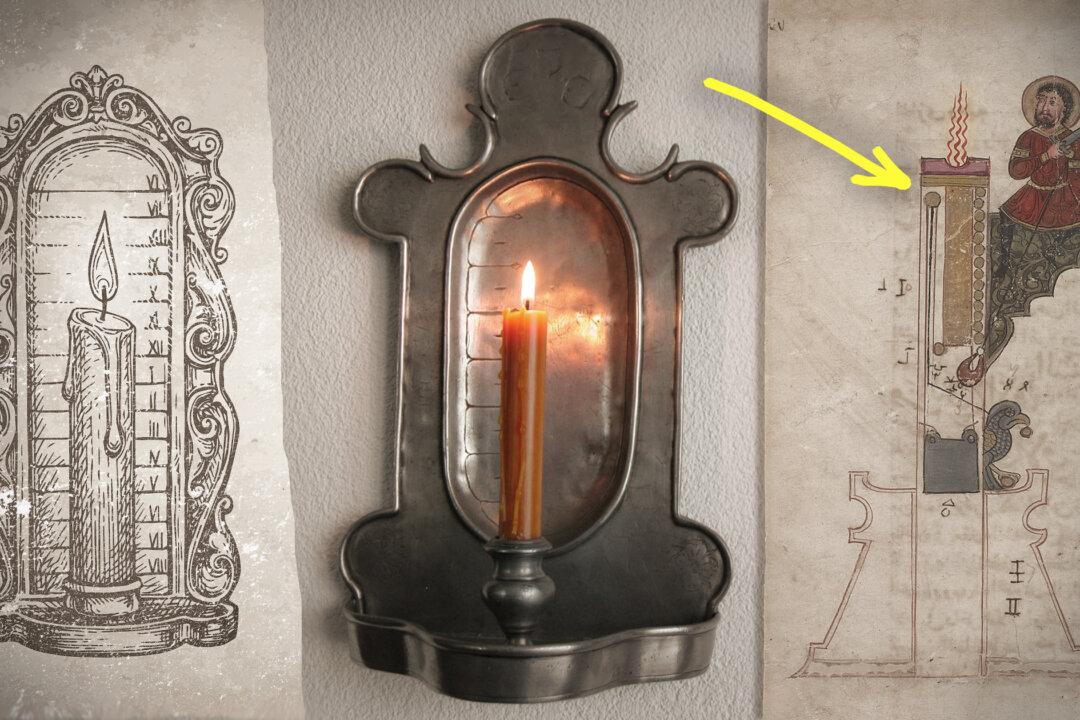The toasty glow of a candle can offer way more than a warm, fuzzy comfort on a cold winter’s night indoors—more than a romantic mood at a dinner table.
The steady burning of a candle, a wax-coated wick, though primitive in means, once served as a reliable measuring device for telling time for many centuries before the invention of the mechanical, wind-up watch, not to mention your digital device. Indeed, the candle clock was once a thing.






